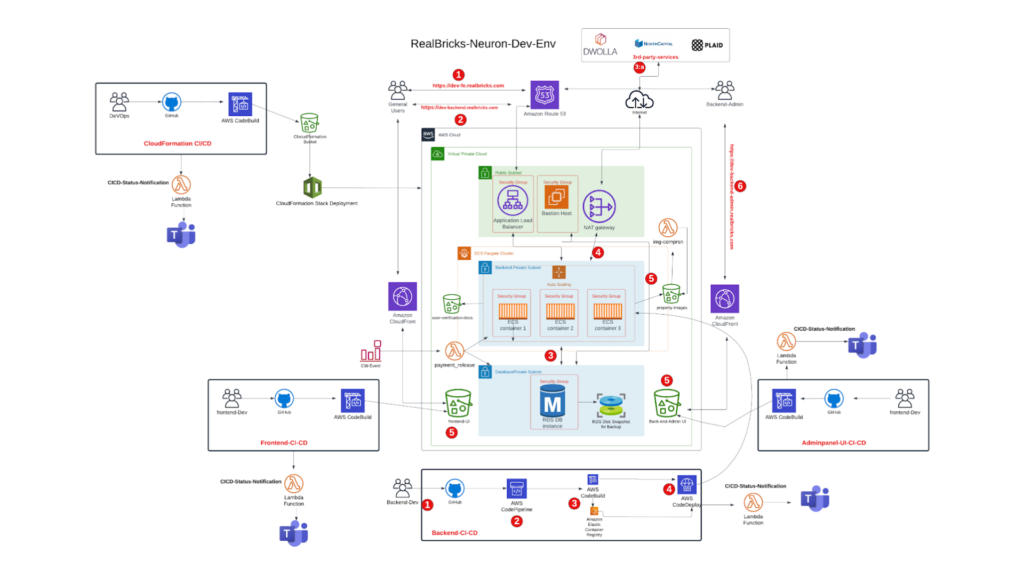Real bricks: Making high-quality real estate investing accessible to everyone.
Category: Real Estate. eCommerce
Services: DevOps, Cloud Architecture Design and Review.
Category: Real Estate. eCommerce
Services: DevOps, Cloud Architecture Design and Review.

Problem 1: Infrastructure Management
The client faced difficulty in creating and managing four environments, namely Dev, UAT, Stage, and Production, with AWS console. This process consumed a lot of time and resources, leading to inefficiencies.
Problem 2: Limited Functionality of Lambda for Cron Job
The client’s cron job involved creating statements and sending them via email to all users on a specific date of every month. However, using Lambda for this task posed a problem as it can only run for 15 minutes. With a vast client database, this functionality would take more time, potentially creating future problems.
Solution 1
To address the client’s infrastructure management problem, we proposed using AWS CloudFormation infrastructure as code. This solution enabled us to create a new environment within two-three hours, significantly reducing the deployment time for large infrastructure projects. Additionally, we implemented a seamless CI/CD pipeline for fast and efficient infrastructure deployment.
Solution 2
To resolve the issue of time-consuming cron jobs, we recommended using an ECS scheduled task triggered by an EventBridge rule. This solution allowed us to create statements and send them via email to thousands of users every month without any issue. We also suggested deploying the client’s backend APIs using ECS Fargate service, which can spawn new containers quickly in the event of failure and scale up or down based on traffic load, providing efficient and cost-effective management of resources.
